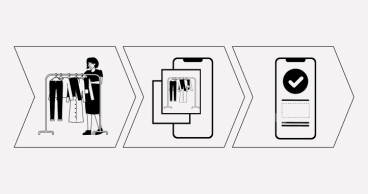Qvalon Blog article content
Are you able to influence your sales through your in-store experiences?
There’s a clear correlation between the two: positive in-store experience = boosted sales.
On the other side of the coin, 64% of consumers won't return to your shop because of a bad shopping experience -- which translates to poor sales.
Create the right atmosphere while improving your bottom line by applying these 10 visual merchandising techniques to increase sales.
And if you pair them with quick staff reporting and efficient monitoring, you’ll be well on your way to delivering a unified, memorable experience across all your locations. This is the key to keeping your brand at the forefront of your customers' minds and building brand loyalty through customer satisfaction.
Use these 10 visual merchandising techniques to boost sales at your store
1. Attract the customer with window displays
Don't miss out on the chance to catch the attention of customers walking outside your store. Window displays open the door to increased sales.
Observe nearby retailers and ask yourself: How can I make my shop stand out from them without overwhelming my customers?
You can attract your target customers' attention by redesigning your window displays with trendy themes that are consistent with your brand. Show off your best-sellers and exclusive products to entice them into making a purchase. The more customers you attract, the more sales you make.
Luxury brand Louis Vuitton aces in this department. Their stores have really eye-catching exteriors and make you feel like you're walking into an art museum or an upscale hotel.
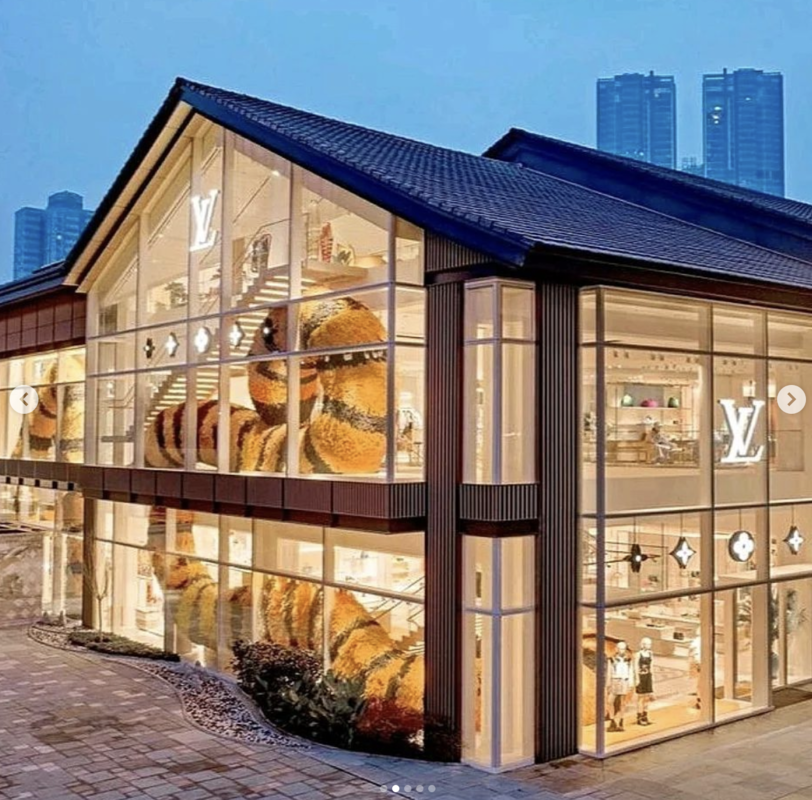
Pro-tip: Maintain consistency and cleanliness in your store displays across all outlets with the help of QVALON photo reports.
2. Refresh store displays
Merchandising tactics won't work if you don't update your displays regularly. Make sure you do it all year round.
Basic visual merchandising techniques like seasonal themes, such as holiday, back-to-school, clearance sale, are great for starters.
To illustrate, transitioning to your Christmas display at the start of the season signals your customers that your seasonal items are now available. This jumpstarts their holiday shopping as early as possible (and also gives them early Christmas joy)–giving you a chance to maximize your revenue for the season.
Updating your store displays also helps you serve your customers better. For instance, highlighting gift ideas should be your primary focus on Christmas since your customers will be on the lookout for them.
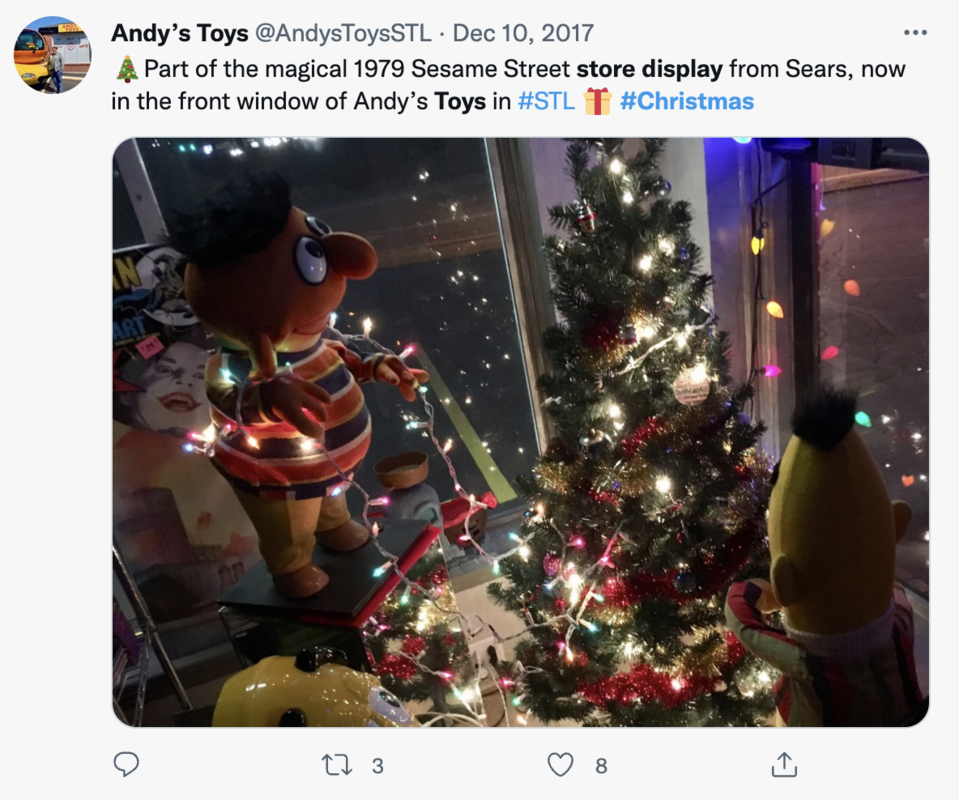
Don’t let delays affect your sales. Transitioning from one store display to another is a lot of work, but you've got to do it constantly to keep up with customer expectations. Streamline the process and make it easier for your staff to stay on top of retail design updates with task automation.
3. Use the Pyramid Principle and the Rule of Three
Merchandise arrangement has a direct impact on customers’ awareness and satisfaction. These two merchandising techniques to increase sales: the Pyramid Principle and the Rule of Three.
The Pyramid Principle involves arranging your products, regardless of their quantity, in a triangular display. While The Rule of Three involves grouping the items into three based on their height, width, or relevance.
Both techniques make the highlighted products more visible, which has a positive impact on the buyer's purchasing decisions.
Primark, an apparel brand, used the Pyramid Principle in their first display while combining both techniques in the second.
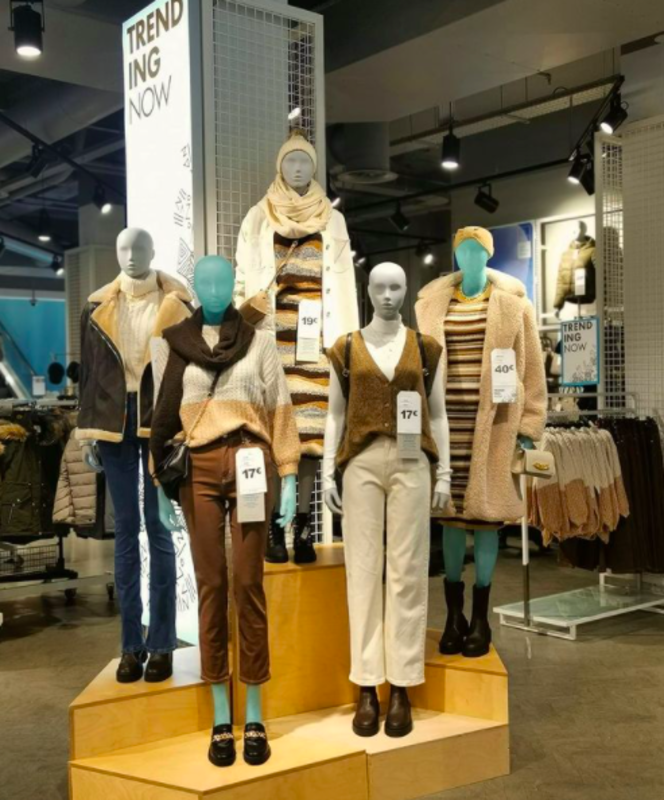
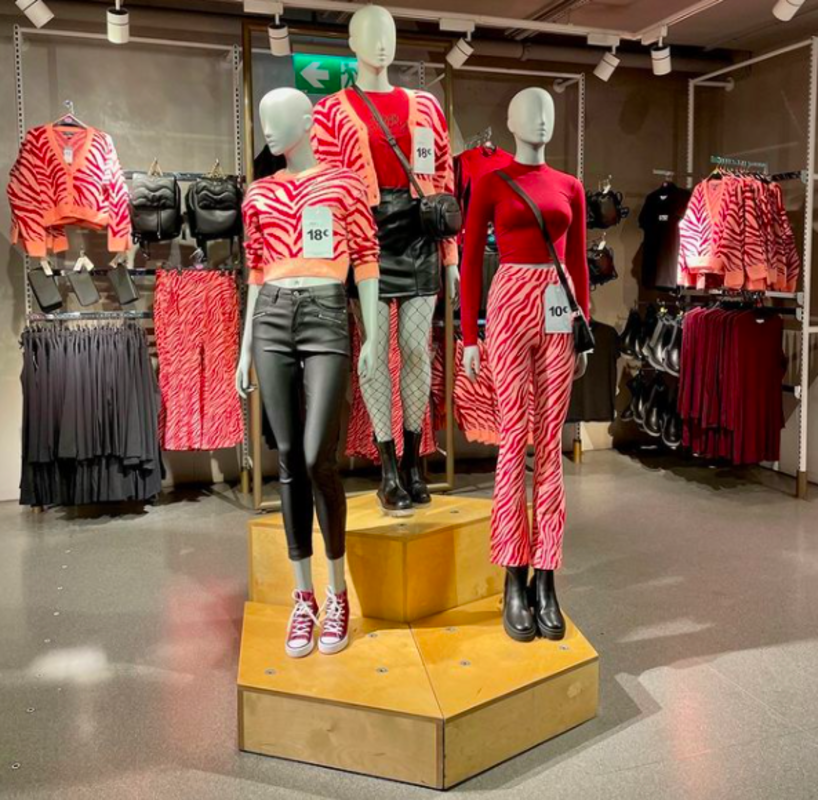
Note that this type of display technique requires expertise from your staff. With the help of QVALON’s surveys, you can evaluate their knowledge of these techniques and check whether they need more training.
4. Explore cross-merchandising
Visual merchandising techniques like cross-merchandising are ideal for introducing new products or promoting slow-moving stocks.
Imagine a customer walking into a convenience store to purchase wine for a party. Grouping liquor and new cured meat products together can pique the customer’s curiosity and tempt them to try them out.
Cross-sell complementary goods in a single rack, create a themed bundle, or provide rewards for purchasing additional items. These retail strategies encourage more purchases for each individual customer. Thus, escalating the total retail sales.
It’s the same visual merchandising technique cosmetic brand, The Body Shop used for its International Men’s Day display.
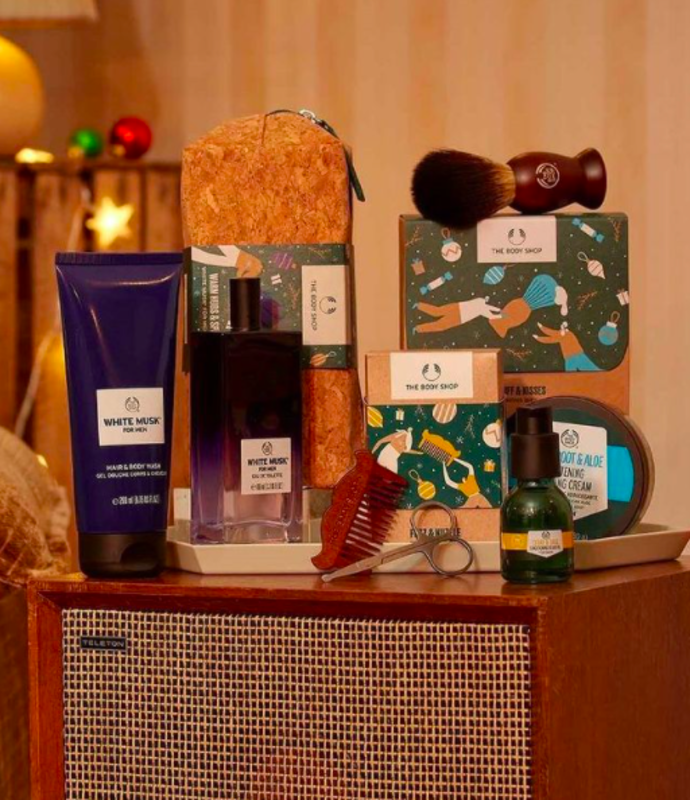
To track and measure how well this technique if clustering your products work for you, you can customize a smart checklist of your cross-displays in QVALON.
5. Stimulate response using color strategy
Color strategy is one of the most accessible merchandising techniques to increase sales. All you need to do is define your brand's color scheme (i.e., monochromatic, analogous, or complementary) and the statement you want to send out to draw customers in.
Place your products only in spaces where both of their colors increase the product's salience.
This color strategy increases the customer's buying impulse for that particular product. So ensure that your products, fixtures, and backdrops complement one another.
Here's how Namari, a women's fashion retail store, seamlessly uses the nude pink palette both to tell their brand story and induce more buying impulses.
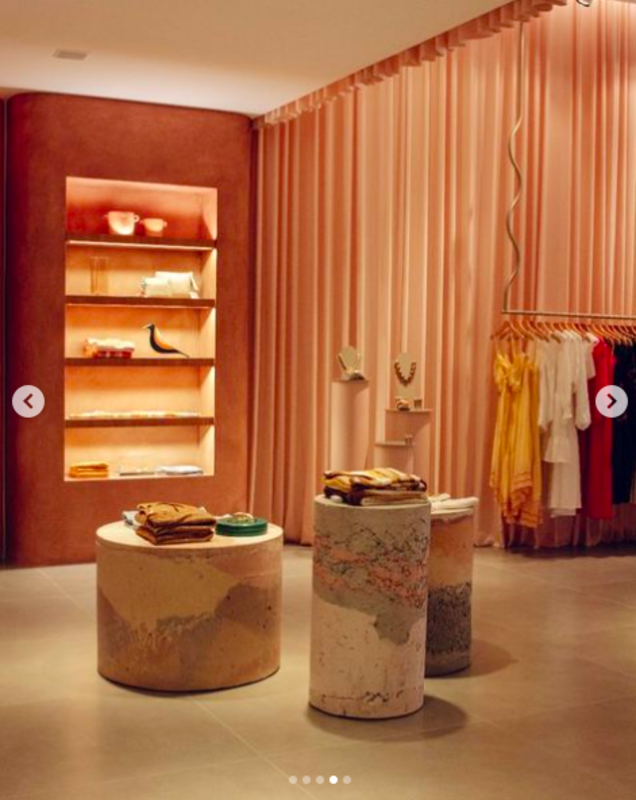
Supervisors can check the correct application of color strategy anywhere, anytime, using QVALON's photo reports. It’ll be easier to point out inconsistencies in the photo, so your staff can quickly address them.
6. Additional lighting
This type of display technique works much like the color strategy, except the focal point is light.
Explore areas in your store where the ambient and accent lighting can highlight your products. Whether it's behind the shelf or underside of the display racks, secure that the lights harmonize with your interior design.
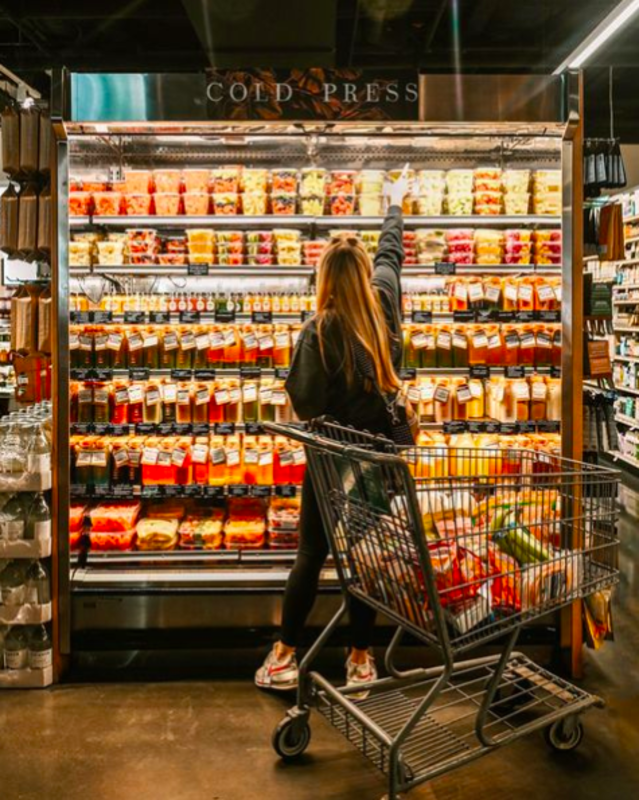
Another thing you should do is spruce up your lighting system, instead of opting for fluorescent lights. You’re more likely to generate sales if your lights are Instagram-worthy.
Let’s say a customer posts a photo in a coffee shop with exquisite lighting and it goes viral. More unique customers will surely jump on the bandwagon and visit the shop. It’s about leaning into the power of FOMO (fear of missing out) and virality that stems from user-generated content, whcih influences purchase decisions for 79% of people.
This merchandising technique to increase sales only work if your additional lighting system is fully functional. But we can’t deny the fact that light fixtures require a lot of maintenance. Setting up a daily task inspections allows your staff to quickly spot any malfunctioning lights and replace them in a timely manner.
7. Implement smart technology
Increased foot traffic can make it difficult to monitor if your merchandising techniques to increase sales are being implemented.
Employees need time and effort to keep them in check. A smart tool like QVALON can help with this.
You can automate the manual work associated with monitoring visual merchandising techniques, such as taking photos, sending emails, and sorting out reports. As a result, your employees can quickly spot which store areas need immediate attention. They also have more time assisting in-store customers, instead of going around the store looking for inconsistent displays.
The platform also allows you to set reminders for the replenishment of products in your displays, so you won’t lose out on possible sales. With technology, you can still ace your sales efforts while dealing with visual merchandising.
8. Note the price tags
Some people don't bother asking store employees about the price of a product without tags. This makes price tags are an essential part of your visual merchandising techniques. You can also stimulate profit by putting discounted price tags on items with discount promotions.
Some price labels can be easily peeled off without notice, so it’s wise to check them every day for accuracy. You can assign and automate this task with QVALON.
At the same time, random checks allow you to verify that all price tags at all your outlets are accurate after periodic price changes. You can prevent customer confusion this way–which wasn't the case in this Twitter thread.
One Zara shopper tweeted, “@ZARA_Care Could you pls explain to me why the initial price of this article of clothing is 19.95 but on the tag of soldes it has been increased to 25.95?”
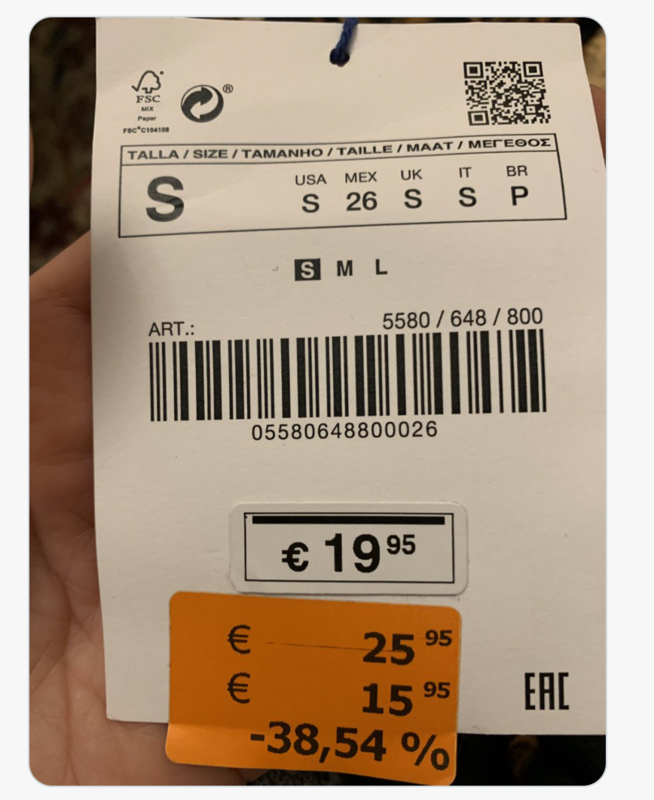
Zara responded with their explanation and apologized for any inconvenience this labeling error caused. Don’t make the same mistake, or you'll lose credibility with your customers.
9. Signages
If having price tags is one of the crucial merchandising techniques to increase sales, as is having a healthy amount of signages around your store. This includes store signage, promo signs, window signs, wayfinding signs, and even safety signs.
Without them, it would be difficult for your customers to find the products they want, delaying their buying process. Knowing the availability of products and where to fetch them increases their buying motivation.
Just think back to the time you were busy searching for something in a grocery store and couldn’t find it. You might have left the store without it. And even if you did find it, it must have been a time-consuming and frustrating experience.
With clear signages, you can prevent lost sales or customer frustration. Here’s how Walmart does it–every section is named (B1) and labeled (antacids) accordingly. This also makes it easier for employees to give directions to customers who ask for a product, as well as for those customers to find the product quickly.a product, and for this customer to easily locate it.
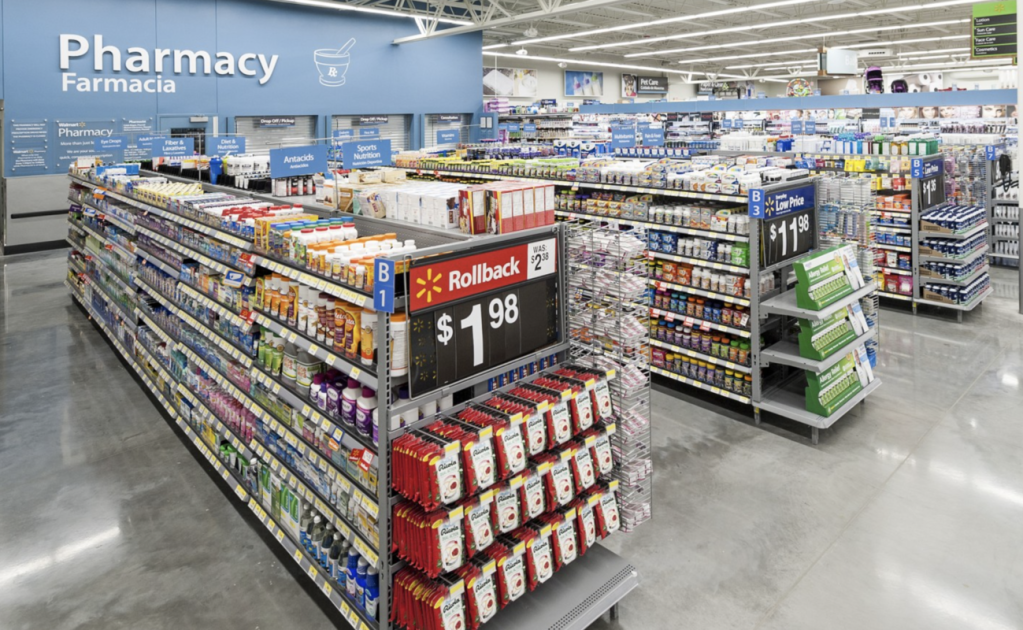
Evaluate the correctness of your signs inside and outside the store at all times using QVALON checklists. From this, you can also rate your stores and find out which signage system works best.
10. Analyze your performance
These merchandising techniques to increase sales don't end once they're put into place. Just like any other marketing strategy, testing will reveal which tactics work for your business.
Track the respective sales of your visual merchandising techniques. Analyze what draws your buyers in, what prompts them to buy the products, and what makes them go back to your store.
With QVALON, you can also conduct audits and rely on advanced analytics for an easier way to assess performance.
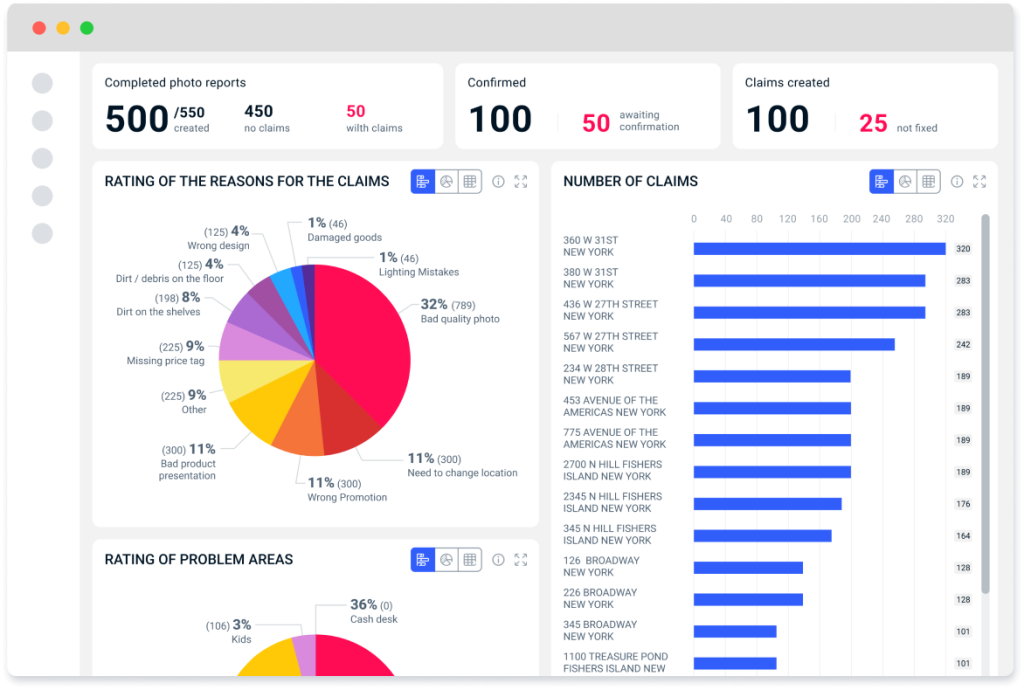
Keep the most effective type of display techniques for your shop and get rid of those that don't yield any positive output, so you can improve your merchandising strategies and drive more profits.
Visual merchandising made easy with QVALON
These 10 visual merchandising techniques have been tried and tested, and they yield positive results.
But every business is different, and so each technique has different level of effectiveness for you.
Multi-location retailers can also have difficulty ensuring consistency in visual merchandising across all their stores.
Both of these issues will require you to rely onmultifunctional system for automating and optimizing your merchandising processes.
If you're ready to boost your team efficiency and retail sales with visual marketing, here’s your chance to get started. Book your free QVALON demo today.

